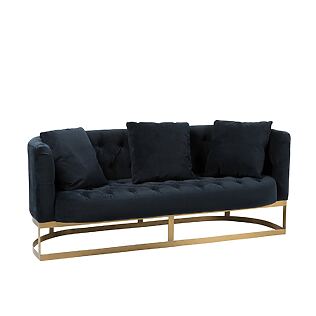In May 2016, an American youth exhibited his glasses on the ground of an exhibition room in the San Francisco Museum of Modern Art and triggered a controversial debate with this simple act. This little provocation and the reactions on it impressively show how glasses have become a object of discourse and a symbol in art.
The fascination for glasses in art has developed over centuries. Artists have been using visual elements for more than a hundred years as a forming part of their public identity. Today, art and glasses are inseparable - just think of Iris Apple's distinctive glasses that are as unique as they are.
The glasses as a visual trademark in the art world
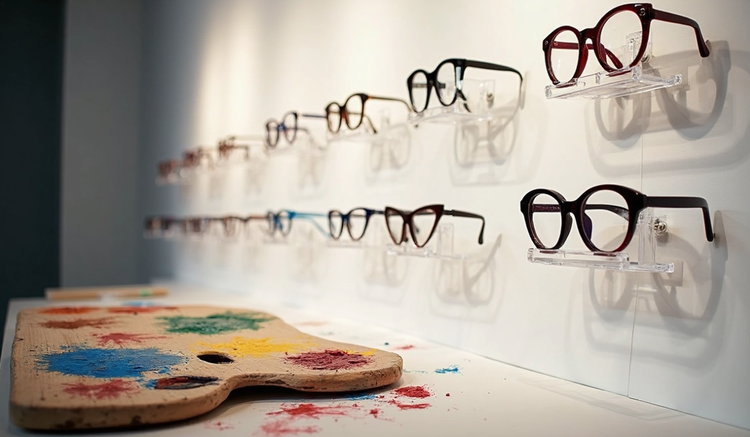
This illustration serves illustration purposes and was created with the help of an image AI.
Glasses have changed a lot over the years and are now essential accessories for artists and creative people to stage themselves. They are not always necessary for the main presentation, but they help to define the character and make things easier to understand.
For many artists, glasses are an opportunity to show who they are. Glasses make us look good and help to feel belonging. In a world in which everything is, the color, shape and material of a frame say a lot about the personality and taste of a person. For example, simple glasses can tell us that you are professional, while striking, striking frames express our creative streak.
Musicians like Elton John, in turn, hid her shyness behind extravagant glasses - for him the glasses could not be unusual enough. Likewise, the Fanta 4 German rapper Thomas D once "glasses wearer of the year" , since its style was significantly shaped by the striking glasses, which became his trademark from the beginning of his career. John Lennon's also examples of how artists cleverly integrate them into their stage presence and thus make them an integral part of their artistic expression.
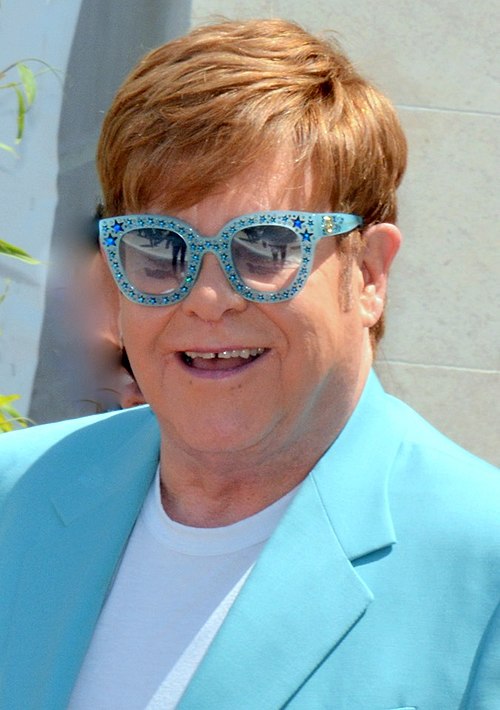
Photographed by Georges BIARD, CC BY-SA 3.0, via Wikimedia Commons
Glasses as a symbol of intelligence
If the cliché that glasses are a symbol of intelligence is still widespread in pop culture, this can be attributed to the art history of this accessories. If we travel back to the late Middle Ages of the 14th century, the costs of this new visual aid were so high that only the wealthiest people could afford them.
Those who wore them every day were often the representatives of a society who were considered intellectuals (scientists, writers, clergy and philosophers) and thus read and write down to old age. Glasses have been associated with intelligence for centuries because they were only observed in people who had knowledge.
As a result, glasses became a means for painters to show their intellectual curiosity towards their subject. This is the reason why certain painters represented their famous portrayers with glasses.
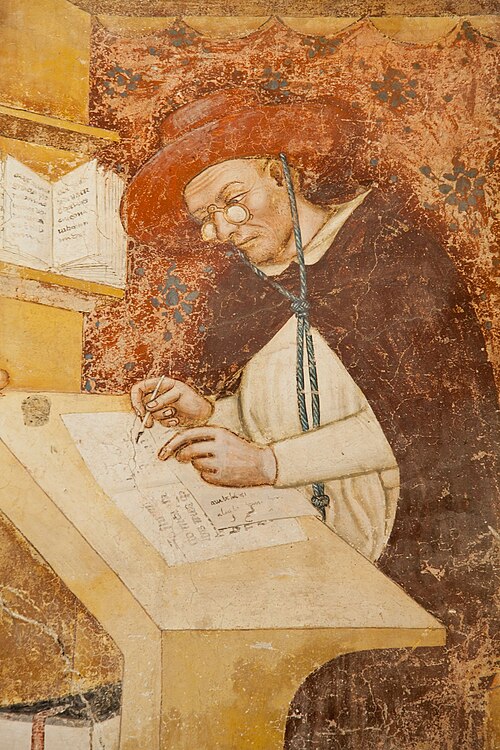
The well -known French painter Henri Matisse , who was one of the most famous artists of modernity and died in 1954, had a big influence on the global art scene at the same time as Picasso. In addition to his creative profession, he always wore suits and characteristic glasses that gave him an intellectual aura when he left the house.
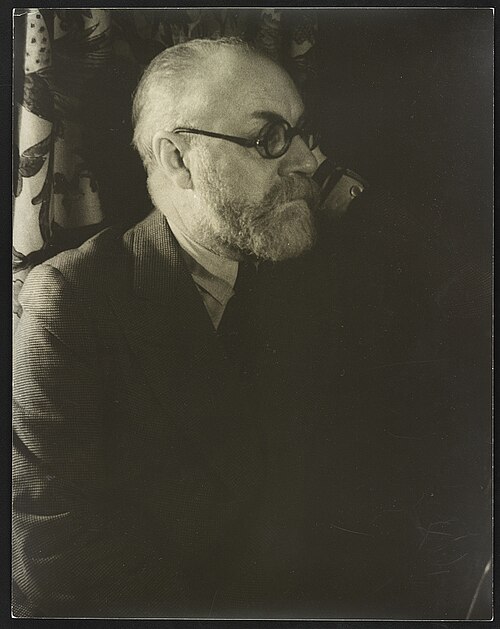
Iconic personalities from the art scene and their glasses styles
Fifty years ago, Andy Warhol already aware that he was the undisputed monarch of pop culture. Transparent, round glasses were his "thing".
The American pop art artist was a pioneer in both art and in the field of fashion. He undoubtedly contributed to fueling the current trend towards fashionable glasses with its untidy light blonde hairstyle and its massive plastic glasses.
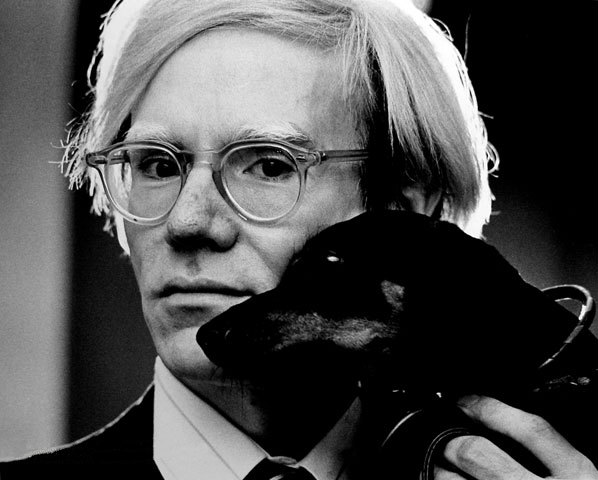
photographed by Jack Mitchell, CC BY-SA 4.0, via Wikimedia Commons
Especially during the wild 1970s, artists recognized the value of the glasses as a personal means of expression. David Hockney , now 85 years old, made his round glasses to the indispensable part of his artistic appearance. His characteristic style - checkered suits, patterned ties and, last but not least, his striking round glasses - gave him an unmistakable presence in the art world. Hockney now wears his glasses in different colors, including strikingly yellow.
The collector Peggy Guggenheim (1898–1979) set a fashionable statement with her iconic butterfly glasses. This unique model, actually inspired by bat wings, was specially designed by the artist Edward Melcarth. Gondring through Venice, she used the striking glasses to attract attention at the same time and to maintain a distance.
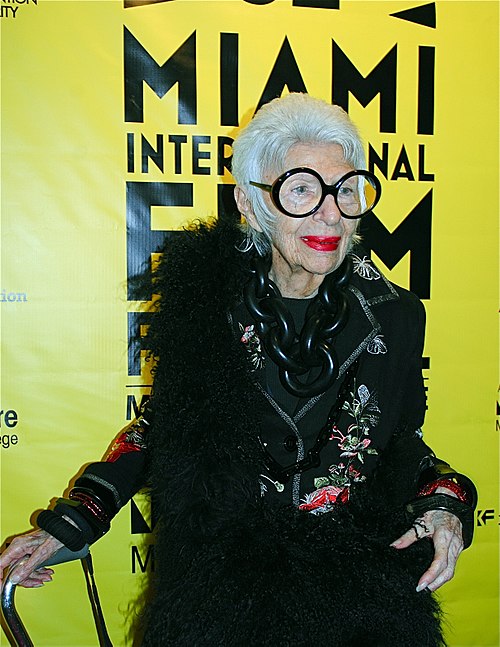
Photo Source: Miamifilm Festival, CC BY-SA 2.0, via Wikimedia Commons
Iris apple is particularly known for your extravagant glasses fashion . Her huge, round "owl eyes" glasses became her unmistakable trademark. As a child, she was fascinated by glasses and began to collect them. Your philosophy:
It's not about what you wear, but how you wear it. "
At the age of 97, she signed a model contract and designed her own glasses collection at the age of 100.
The choice of a round glasses frame often signals eccentricity and free spirit. It is not for nothing that John Lennon, Janis Joplin and Le Corbusier are among the best -known followers of this expressive form.
Julian Schnabel also liked to show that you are never too old for wearing expensive glasses. The German-American painter and filmmaker became famous in the 1980s by his "record paintings" .

Photo © Nick Stepowyj, CC BY 2.0, via Wikimedia Commons
How to form artistic identity glasses
The relationship between artists and their glasses goes beyond the mere functionality. The helpful accessories are expanded to expand the artistic identity, as the illustrator Richard Haines confirms in the following statement:
My glasses became an expansion of my identity as an artist. ”
He selects his glasses for shapes and details - just like when drawing, where these elements mean everything.
Johnny Depp not only uses glasses as props, but as a decisive element in designing his characters. His choice of glasses (at the Berlinale 2020 he wore an artistically manufactured metal glasses ) skillfully balanced between striking statement and subtle elegance-a rare duality that only achieve a few. In fact, mirrors n glasses in art often often the complex, multi -layered personalities that art artists bring to life.
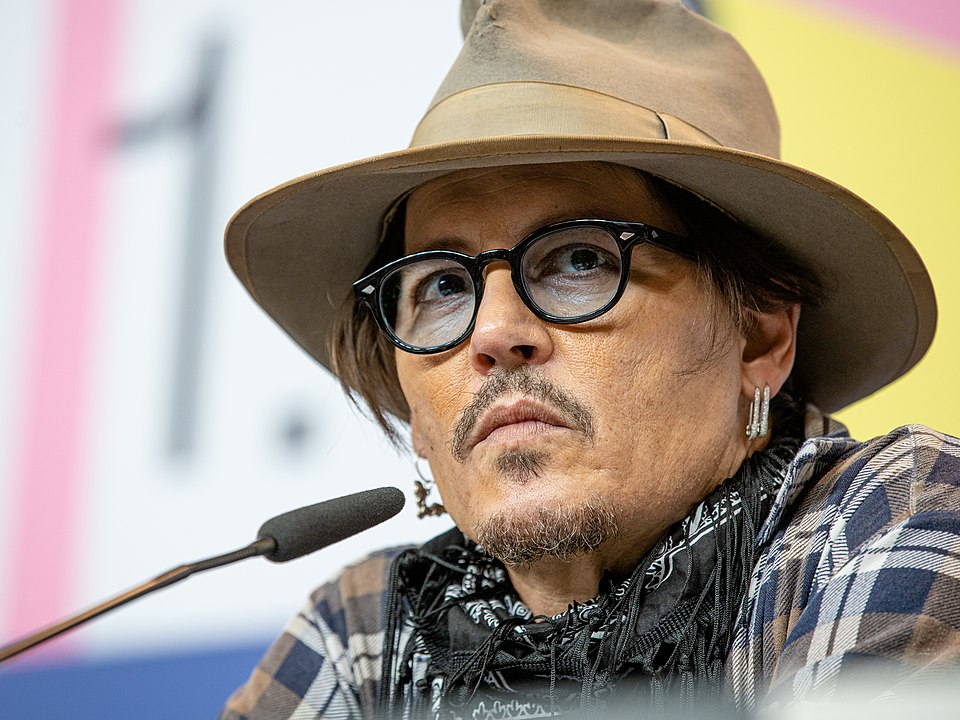
photographed by Harald Krichel, CC BY-SA 3.0, via Wikimedia Commons
Let's hold on ...
Glasses have developed from simple visual aids to powerful symbols of artistic expressiveness. While the glasses used to be mainly scholarship and dignity, today it serves as a personal statement and distinctive trademark. The stories of David Hockney, Peggy Guggenheim and Iris Apfel clearly show that the right glasses can be far more than an accessory - it becomes an extended arm of the artistic vision.
The fact that artists consciously use their glasses to emphasize or even reinforce their glasses consciously. John Lennon's round glasses signaled his free spirit, while Iris Apfels underline striking "owl eyes" her eccentric nature. At the same time, the glasses enable the artist to literally look at the world through a unique filter - a metaphor for the artistic look itself.
The interrelation between artist and glasses extends far beyond the functional. It becomes a visual anchor where the viewer can determine the personality of the wearer. Ultimately, mirrors t the choice of glasses resist the artistic soul - be it through minimalist framework that convey professionalism, or through extravagant models that symbolize creative freedom.

Owner and managing director of Kunstplaza . Publicist, editor and passionate blogger in the field of art, design and creativity since 2011. Successful conclusion in web design as part of a university degree (2008). Further development of creativity techniques through courses in free drawing, expression painting and theatre/acting. Profound knowledge of the art market through many years of journalistic research and numerous collaborations with actors/institutions from art and culture.












